In the studio with Aunty Ellen Trevorrow
At Camp Coorong, Aunty Ellen Trevorrow and her friend and collaborator Jelina Haines are weaving the next chapter in a long, rich story.

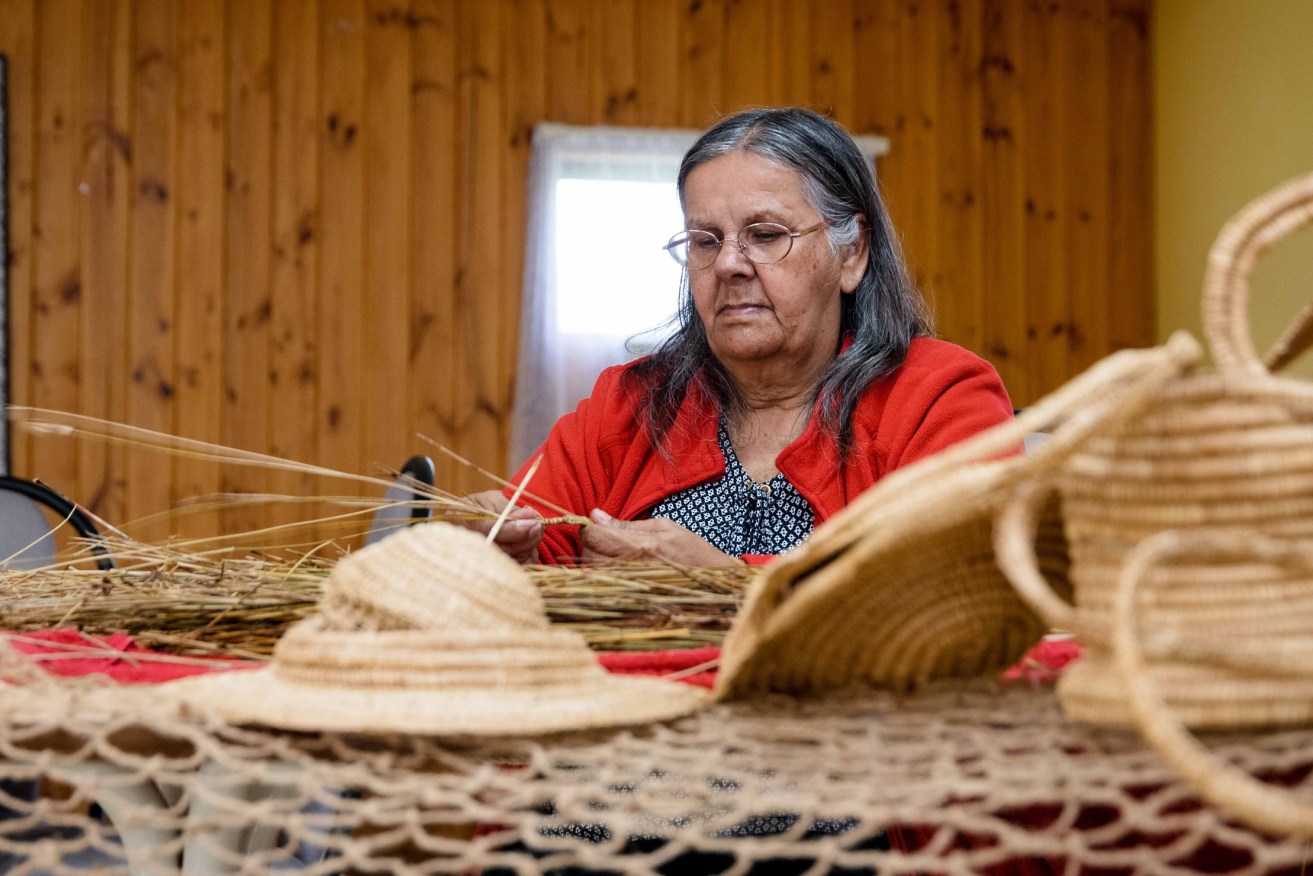
Ngarrindjeri elder and celebrated weaver Aunty Ellen Trevorrrow creating her artworks at Camp Coorong. Photo: Jack Fenby
It’s little surprise that when I greet Aunty Ellen Trevorrrow, she’s in the middle of weaving. “There’s rushes everywhere,” she tells me. “We’re making use of everything.”
These days the Ngarrindjeri elder and celebrated weaver does much of her work from a wood-panelled room in Camp Coorong, an inviting cultural centre seven minutes out from Meningie and a short hop from the lagoon that gives the camp its name.
Set in the heart of the lands and waters of Ngarrindjeri Ruwe, for more 30 years the camp has been a special place for Trevorrow, her family, and the countless visitors who have passed through.
“We started years ago,” she explains, rethreading a story that began in 1985, as her late husband Tom Trevorrow, his brother George, and their community set out to build something special. “Tom and George were looking at creating a place in the community to have camps, create employment for our young ones, and share our culture.”
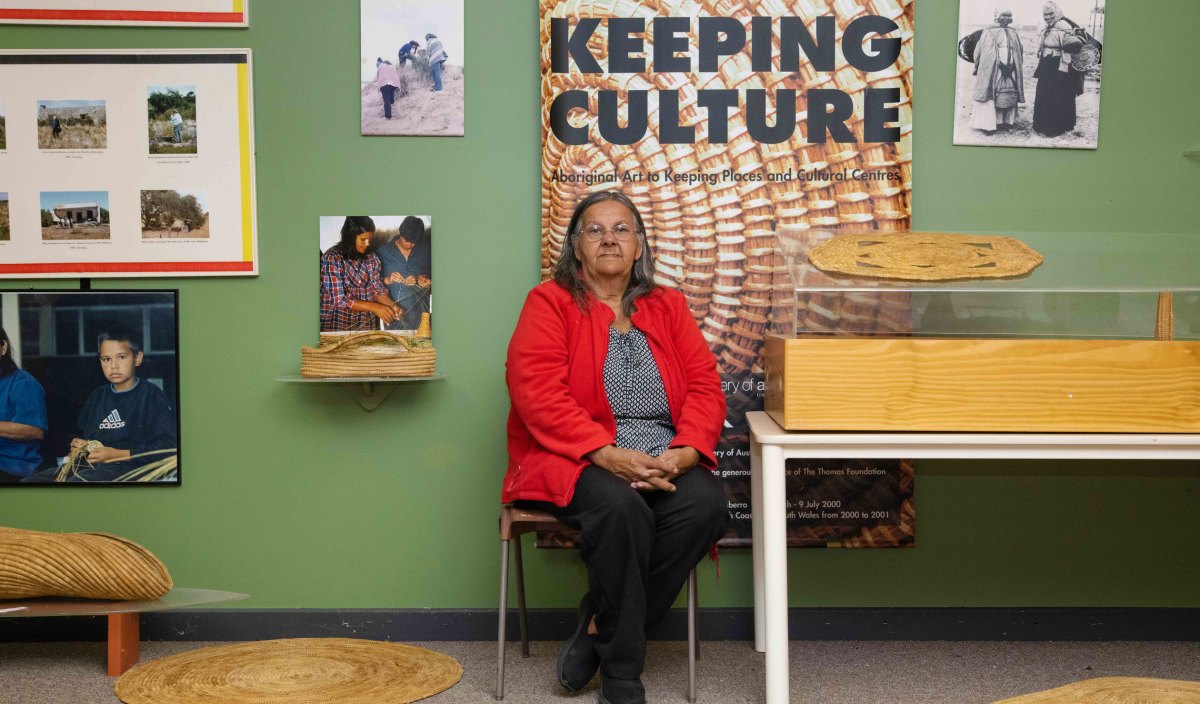
Camp Coorong has long been a special place for Aunty Ellen. Photo: Jack Fenby
The camp has been officially closed to the public since 2018, but it remains an important base for Trevorrow and her practice as she works to reopen the facility, and honour those who helped build it. As she weaves, she is surrounded by culture and memory, looked over by black and white portraits of David Unaipon and other elders long passed, and a rich collection of cultural objects that form the camp’s museum.
Her latest project, a set of fibre artworks commissioned by Guildhouse for the Department of Infrastructure and Transport’s new office fit-out in Pirie Street, saw Trevorrow look to the totems of her family and Ngarrindjeri community.
“They’re our Ngartji, our totems,” she explains. “My husband Tom, he’s the Pelican, the Ngori; [and there’s] Krauli, the White-Faced Heron; Kungari, Black Swan; then the Pondi, Murray Cod.
“It’s a really good feeling, of all these totems, and making it happen. It’s a big honour; we had to have family help pick all the rushes to make it all happen.”
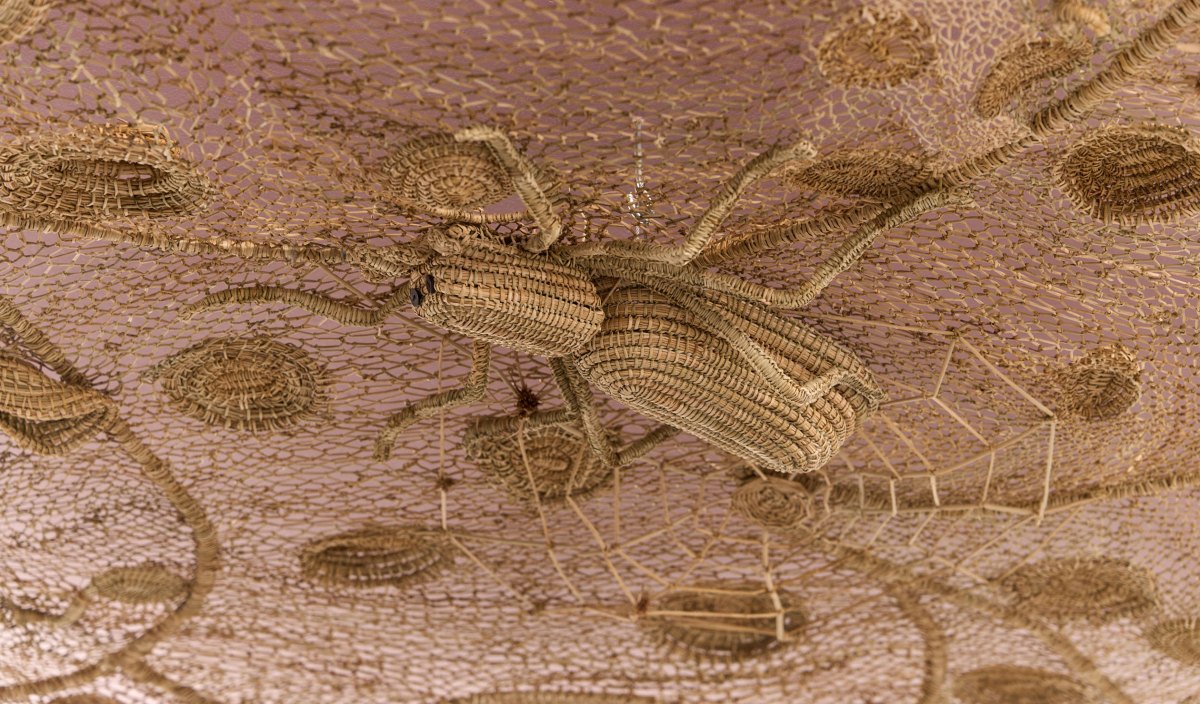
Woven artworks created by Aunty Ellen Trevorrow and Jelina Haines installed on the ceiling of the Department of Infrastructure and Transport foyer. Photo: Sam Roberts
Her collaborator on the project, artist and academic Jelina Haines, has been weaving by Aunty Ellen’s side for 20 years after the pair met in a weaving workshop.
“I was raised traditionally, growing up back home in the Philippines, then educated in the American system, then migrated to Australia with the English system, then going back to traditional systems,” Haines says. “It’s kind of going full circle with this learning process.”
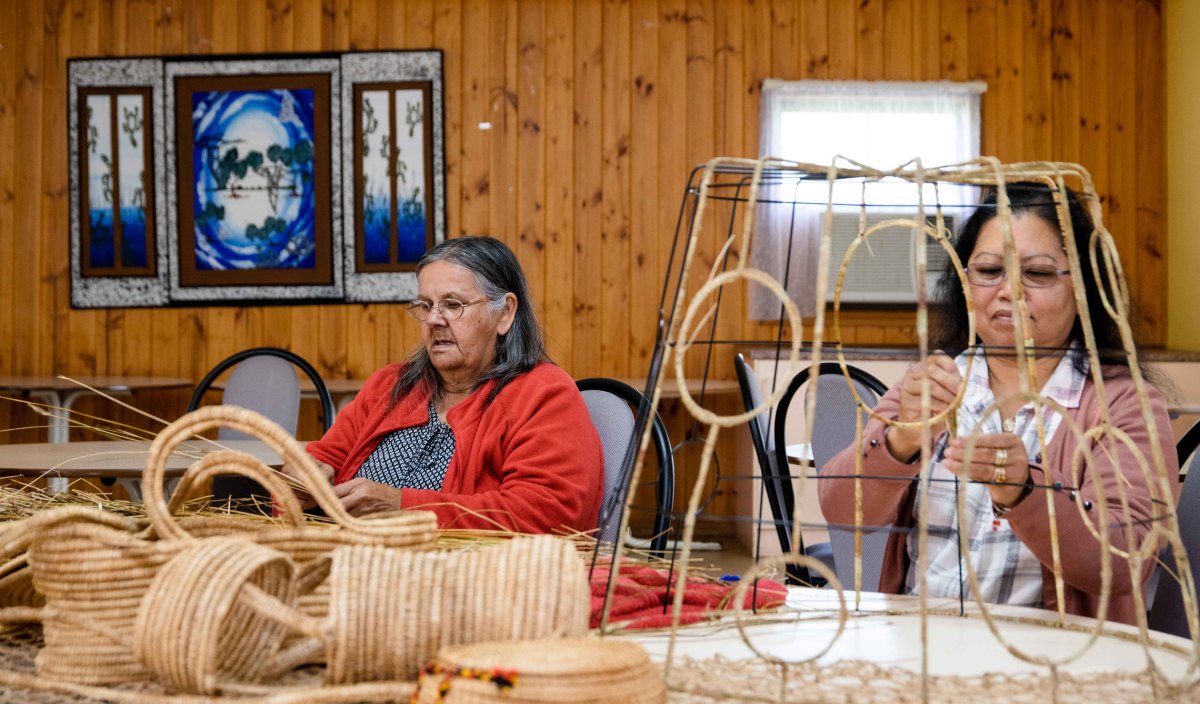
Weaving side by side: Aunty Ellen Trevorrow and Jelina Haines. Photo: Jack Fenby
While Haines’ family have their own weaving tradition back home, picking up these time-honoured Ngarrindjeri practices has created deep ties with Aunty Ellen and her community.
“I already had the background behind me, but learning the Ngarrindjeri way is another level again,” she says. “So having Ellen mentor me all the way over 20 years, doing my studies, and my PhD with those stories, it’s been a great honour.
“It’s been incredible, and [has involved] many projects along the way, and hopefully the younger ones will follow when we’re no longer around.”
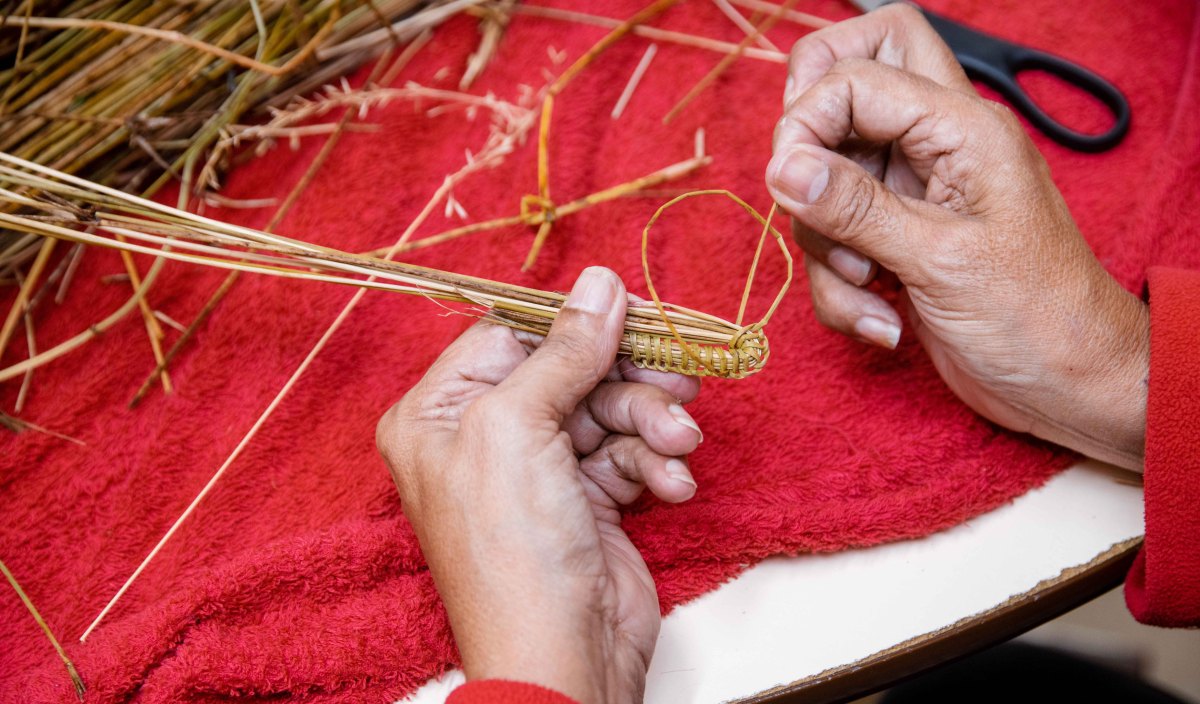
Weaving is an important means of sharing traditional culture. Photo: Jack Fenby
Trevorrow often says that weaving brings together more than the fibres in your hands. As friends and family sit side by side, folding one freshwater reed over another, they exchange stories, knowledge, and friendship from one generation to the next, one culture to another.
“It’s an ongoing thing,” she explains, as she reflects on the past two years where, for the first time in her life, communal weaving was not possible.
“Sadly, though, the COVID got in our way – we’re helping each other out through it all, looking after ourselves. The weaving is a healing, you know, and all the items that we’ve woven, and teaching, it’s the stories that are behind it all. It’s a healing for us.”
At the height of the pandemic it was Haines who helped keep things together, using Zoom and other technological workarounds to maintain that sense of community despite the physical distance. As they gradually work to get Camp Coorong back on its feet, she and Aunty Ellen hope to keep these new tools going to ensure the benefits of weaving can continue even when weavers can’t be side by side.
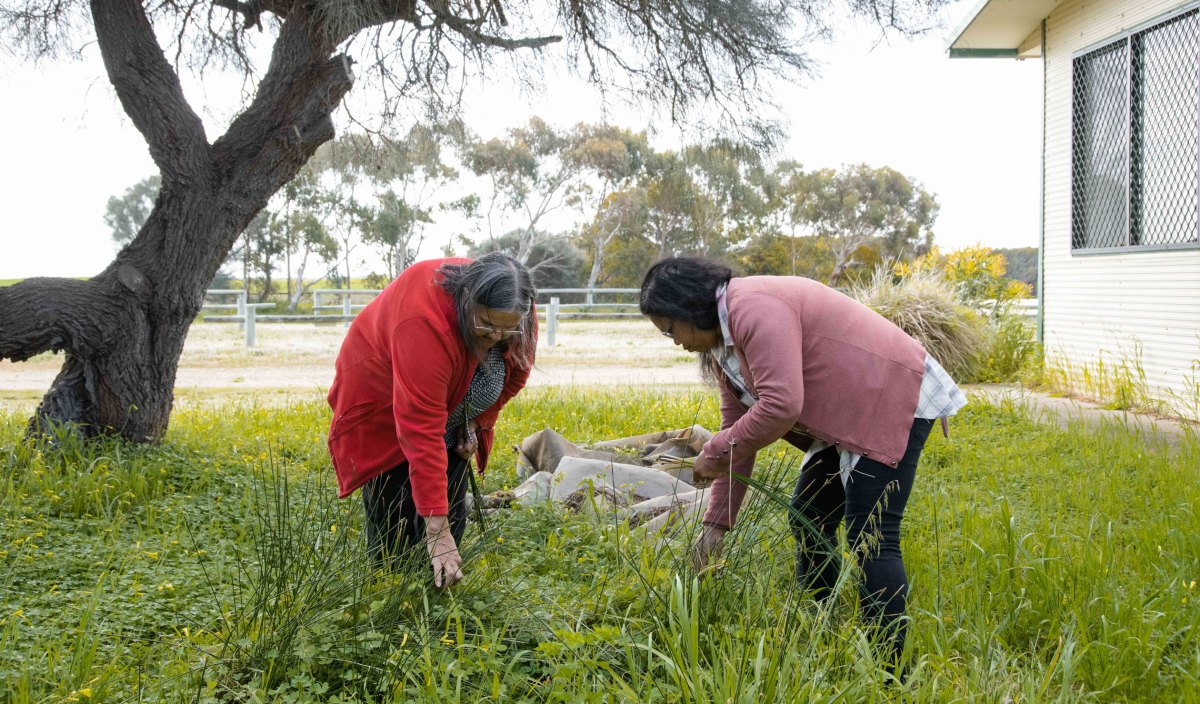
The friends and collaborators collect reeds together. Photo: Jack Fenby
“The camp’s been closed, but we’ve just got ourselves back on our feet again,” Trevorrow says, confident that the museum at least will be open to the public soon.
“It’s a community place; it’s an honour to share our culture with the groups that come through Camp Coorong. There’s a lot of groups that weren’t in a hurry to go back home! All those things, the sharing of the culture, is so important.
“We look to the elders that have gone, that have worked tirelessly, especially my husband Tom, to get it back open and keep it going for our young ones. Everything we do is for our young ones. They’re all adults now, parents, but we’ve got to look at their children, and their children, to continue sharing our culture.”
Outside Aunty Ellen’s weaving station, a mural fixed to a gate sums it up best: “stitch by stitch / circle by circle / weaving is like the creation of life / all things are connected”.
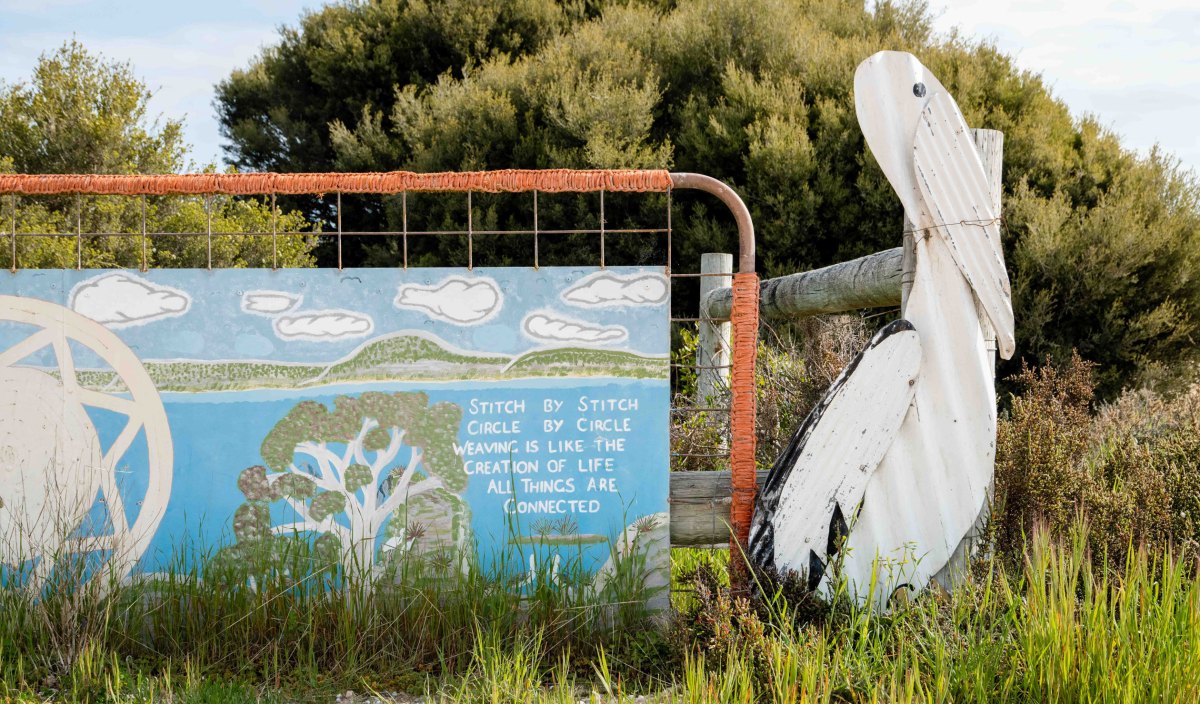
All things are connected: A mural fixed to a gate at Camp Coorong. Photo: Jack Fenby
In the Studio is a regular series presented by InReview in partnership with not-for-profit organisation Guildhouse. The series shares interesting stories about South Australian visual artists, craftspeople and designers, offering insight into their artistic practices and a behind-the-scenes look at their studios or work spaces. Read our previous stories here.




